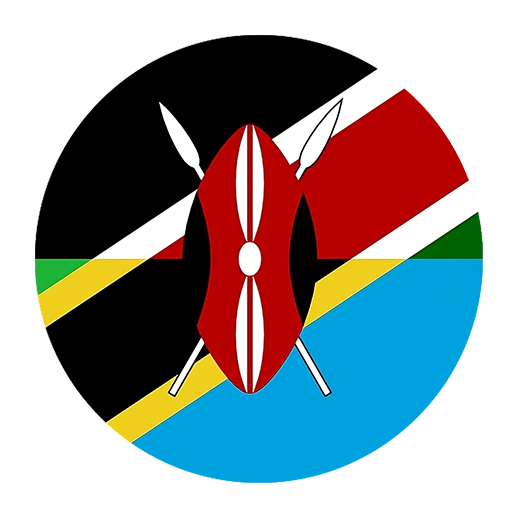When learning a new language, one of the most fascinating aspects is discovering how a single word can have multiple meanings depending on the context. Swahili, a Bantu language spoken by millions of people in East Africa, offers an intriguing example of this phenomenon. The word “jambo” is a case in point. In Swahili, “jambo” can mean both “hello” and “thing,” which can be confusing for learners at first. This article aims to clarify these different uses and help you understand how to use “jambo” correctly in various contexts.
The Dual Meaning of Jambo
In Swahili, “jambo” is a versatile word that can convey different meanings based on how it is used. Let’s break down its two primary meanings:
1. **Jambo** as “Hello”: This is perhaps the most widely recognized use of the word. When you hear “jambo” in a greeting, it is a friendly way to say “hello” or “hi.”
2. **Jambo** as “Thing”: In another context, “jambo” can also mean “thing” or “matter.” This usage is more nuanced and can be employed in various ways to refer to different “things” or “matters.”
Understanding Jambo as “Hello”
When used as a greeting, “jambo” is a simple and effective way to acknowledge someone’s presence. In many East African countries, saying “jambo” is a common way to start a conversation. Here are some key points to remember:
– **Jambo** is often used in tourist areas because it is an easy and friendly way for locals to greet visitors.
– It’s a neutral greeting that can be used at any time of the day.
– It can be used both formally and informally.
Example:
– Tourist: Jambo!
– Local: Jambo! Habari yako? (Hello! How are you?)
In this context, “jambo” is akin to saying “hello” in English. It’s a friendly and open way to start a conversation, making it a useful word for anyone learning Swahili.
Jambo in Popular Culture
Interestingly, the word “jambo” has also made its way into popular culture, particularly through the tourism industry in East Africa. For instance, the song “Jambo Bwana” (Hello, Sir) is a well-known Swahili song that has been embraced by tourists and locals alike. The lyrics are simple and repetitive, making it easy for non-Swahili speakers to join in.
Lyrics excerpt:
– Jambo, Jambo bwana (Hello, Hello sir)
– Habari gani? (How are you?)
– Nzuri sana (Very fine)
This song is often performed at hotels, resorts, and cultural events, serving as a welcoming anthem for visitors to the region. It’s a delightful example of how a single word can bridge cultures and create a sense of community.
Understanding Jambo as “Thing”
The second meaning of “jambo” is “thing” or “matter.” This usage is more context-dependent and can be a bit trickier for learners to grasp initially. Here are some key points:
– **Jambo** as “thing” is used to refer to objects, situations, or abstract matters.
– It is often used in conjunction with other words to provide clarity.
Example:
– Hilo ni jambo zuri. (That is a good thing.)
– Jambo hili ni gumu kuelewa. (This thing is hard to understand.)
In these examples, “jambo” is used to refer to a specific “thing” or “matter.” It functions similarly to the English word “thing,” which can refer to a wide range of objects or situations.
Common Phrases Using Jambo as “Thing”
To better understand how “jambo” is used in this context, it’s helpful to look at some common phrases and expressions:
– **Jambo muhimu**: Important thing/matter
– Example: Jambo muhimu ni kwamba unapaswa kusoma kila siku. (The important thing is that you should study every day.)
– **Jambo dogo**: Small thing/matter
– Example: Hilo ni jambo dogo, usijali. (That is a small thing, don’t worry.)
– **Jambo la maana**: Meaningful thing/matter
– Example: Kila mtu anapaswa kufanya jambo la maana maishani. (Everyone should do something meaningful in life.)
These phrases illustrate how “jambo” can be combined with adjectives to describe various “things” or “matters.” Understanding these combinations will help you use “jambo” more accurately in your conversations.
Context is Key
As with many words in any language, the meaning of “jambo” heavily depends on the context in which it is used. Here are some tips to help you determine the correct meaning:
1. **Listen for Additional Clues**: Pay attention to the surrounding words and the overall context of the conversation. If “jambo” is used at the beginning of an interaction, it is likely a greeting. If it appears in the middle of a sentence, it probably means “thing” or “matter.”
2. **Tone and Body Language**: Non-verbal cues can also provide hints. A warm smile and open body language usually accompany “jambo” as a greeting. In contrast, a more neutral tone and focused demeanor might indicate that “jambo” is referring to a “thing” or “matter.”
3. **Practice Makes Perfect**: The more you practice and immerse yourself in Swahili conversations, the easier it will become to distinguish between the different meanings of “jambo.” Engage with native speakers, listen to Swahili media, and try to use the word in various contexts to build your confidence.
Tips for Learning Swahili
Understanding the dual meaning of “jambo” is just one step in your Swahili learning journey. Here are some additional tips to help you master the language:
Immerse Yourself
One of the best ways to learn any language is through immersion. Surround yourself with Swahili as much as possible:
– **Watch Swahili Movies and TV Shows**: This will help you get used to the rhythm and flow of the language.
– **Listen to Swahili Music**: Songs like “Jambo Bwana” can be both enjoyable and educational.
– **Read Swahili Books and Articles**: Start with simple texts and gradually move to more complex material.
Practice Speaking
Practice is crucial for language learning. Try to speak Swahili as often as possible:
– **Find a Language Partner**: Practicing with a native speaker can provide valuable feedback and help you improve.
– **Join Language Exchange Groups**: Many cities have language exchange meetups where you can practice Swahili with others.
– **Use Language Learning Apps**: Apps like Duolingo and Babbel offer interactive Swahili courses.
Learn Common Phrases
Building a strong foundation of common phrases will boost your confidence and make it easier to engage in conversations:
– **Greetings**: Jambo (Hello), Habari (How are you?), Nzuri (Fine)
– **Questions**: Unaitwa nani? (What is your name?), Unaenda wapi? (Where are you going?)
– **Responses**: Naitwa [Your Name] (My name is [Your Name]), Naenda sokoni (I am going to the market)
Understand the Grammar
Swahili grammar is relatively straightforward but has some unique features:
– **Noun Classes**: Swahili nouns are grouped into classes, each with its own prefix. Understanding these classes is essential for proper grammar.
– **Verb Conjugation**: Verbs in Swahili change based on tense, mood, and aspect. Learning the basic conjugation patterns will help you form correct sentences.
– **Sentence Structure**: Swahili typically follows a Subject-Verb-Object (SVO) order, similar to English. However, word order can change for emphasis or in questions.
Stay Consistent
Consistency is key to language learning. Make a study schedule and stick to it:
– **Daily Practice**: Even 15-20 minutes of daily practice can make a big difference.
– **Set Goals**: Set short-term and long-term language learning goals to stay motivated.
– **Track Your Progress**: Keep a journal or use an app to track your progress and celebrate your achievements.
Conclusion
The word “jambo” in Swahili exemplifies the richness and complexity of language learning. By understanding its dual meanings—”hello” and “thing”—you can navigate conversations more effectively and deepen your appreciation for Swahili. Remember, context is crucial, and the more you immerse yourself in the language, the more intuitive these distinctions will become.
Keep practicing, stay curious, and enjoy the journey of learning Swahili. Asante sana (Thank you very much) for reading, and best of luck in your language learning adventure!

